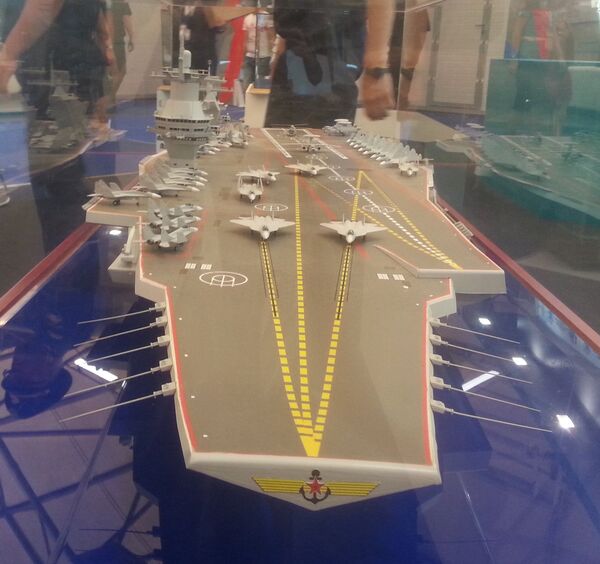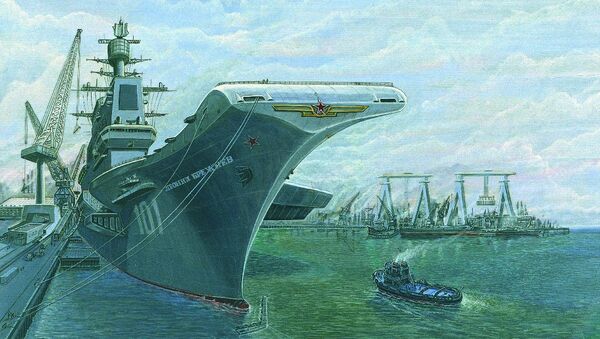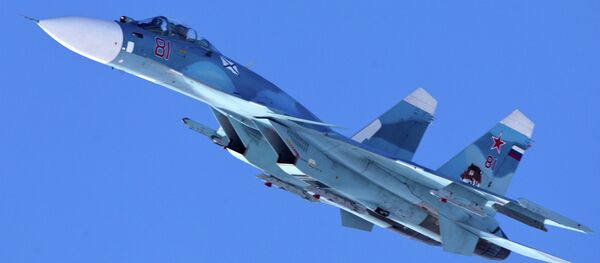The Admiral Kuznetsov began its involvement in the Syrian operation on November 15, its Su-33 fighter jets taking off to launch attacks against Daesh and Al-Nusra targets. Many Russian and foreign defense experts have pointed to the fact that this is the first time Russia has used an aircraft carrier in wartime.
But despite its traditional status as a land-based military power, Russia is actually no stranger to aircraft carrier design and construction, its history going back over a hundred years. Sputnik takes a look back at some of the most interesting designs created by Imperial Russian, Soviet, and post-Soviet Russian engineers and designers.
Baby Steps…
Russia's history with ship-launched 'aircraft' technically began in 1904 with the Rus, a German-built ship converted into an aerostat-carrier by the Imperial Russian Navy to conduct long-range marine reconnaissance. With the advent of the seaplane on the eve of the First World War, Russia would join other powers in converting vessels to carry the newfangled aircraft.
In addition to the Orlitsa, the Imperial Navy fielded two more steamers, the Emperor Alexander I and Emperor Nikolai I, ships purchased from Britain in 1913, and converted for use as seaplane carriers in 1916. The ships were armed with 6x120-mm and 2x57-mm machine guns and carried between 7-8 seaplanes apiece. Serving in the Black Sea during WWI, the ships carried out numerous operations against Turkish and German forces.
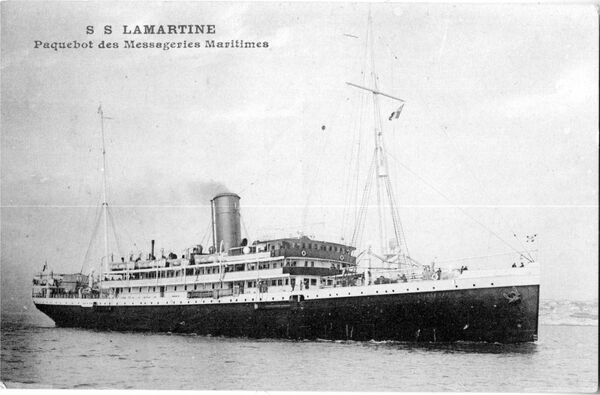
In 1919, the Alexander I, renamed the Republican after the February Revolution, was captured by French interventionist forces and taken back to France. In 1942, the ship was sunk by a US Air Force Bomber off the coast of Indochina. Its sister ship, the Emperor Nikolai I, suffered a similar fate. Renamed the 'Aviator' in May 1917, the ship was captured by Germany, transferred to the breakaway Ukrainian state, and then to the French government. After France's military defeat in 1940, Britain took control of many French merchant ships, including the Aviator. In 1942, the ship ran aground off the coast of Gabon, was abandoned, and consumed by the waves.
In 1918, at the start of the Russian Civil War, the Red Army commissioned an interesting project for their Volga Flotilla. Sailors converted an old oil-carrying barge into a seaplane carrier, and the result was the Communa, a 'shock barge' equipped with two lifting and lowering mechanisms for the ship's 9 aircraft, including 6 M-9s and 3 WWI-era French Newport 17 seaplanes. The Communa's planes were used to gather intelligence, and to bomb White Army fortifications and ships.

Interwar Plans
During the interwar period, the Soviet Union committed most of its military's resources to the army, and to a lesser extent, the air force, leaving the Navy shortchanged. In 1938, looking to take advantage of new resources and engineering know-how provided by the Soviet industrialization campaign, the Navy drew up a large-scale naval construction program, consisting of 15 battleships and 2 aircraft carriers, to be built over a ten year period over two five-year plans. The carriers, meant to be the first in a series of six, would be built during the second five-year period, and deployed one apiece to the Pacific and Northern Fleets. The Nazi invasion of the Soviet Union in June 1941 effectively sunk the Navy's ambitions, and the plan to build the carriers was shelved.
Nevertheless, the designs for the ships have given rise to some interesting 'what if' scenarios. In 1937, the USSR contracted American engineers to develop a hybrid aircraft carrier and battleship design, among them a project that would become known as Project 10581. The hybrid, created by New York ship design firm Gibbs & Cox, was a 73,000 ton monster to be armed with 8x457-mm or 12x406-mm heavy cannons, 28x127-mm and 32x28-mm guns, and an aircraft contingent of 36 deck-launched planes, plus 4 seaplanes. The ship was to be equipped with two catapult systems, and fitted with armor between 197-mm and 330-mm thick. Further design efforts proved unsuccessful, the ship was deemed impractical, and the Soviet Union ultimately gave up on the idea of a carrier-battleship hybrid.

During the same period, Soviet and foreign designers collaborated to create a more traditional aircraft carrier design, coming up with what became known as Project 71 in mid-1939. The small carrier, with a displacement of 11,300 tons, was to be armed with 8x100-mm universal cannon, 16x37-mm guns, and 20x12.7-mm machineguns. The ship would have carried 20 aircraft, launched using 2 catapults. The Navy approved the project, and the first ship would have been laid down in 1942. The war froze the plans. Designers continued their work, creating the upgraded Project 72 in 1944, but neither project would ever see the light of day.

After the conclusion of the war, in November 1945, the Navy unveiled a new shipbuilding program for the years 1946-1955. With the country severely damaged by the war and struggling to rebuild its basic civilian and military infrastructure, the Navy was not given the resources to develop aircraft carriers.
1960s: First We Make Helicopter Carriers
In the 1960s, the Soviet Navy commissioned the creation of a new class of ship — the helicopter carrier, launching the Moskva in 1967, and its sister ship, the Leningrad, in 1969. The ships, designed entirely by Soviet designers and built in the famous shipbuilding city of Nikolayev, southern Ukraine, carried 14 Ka-27 (NATO code name Helix) anti-submarine warfare helicopters. To complement the helicopters, the ships were equipped with sensors for the detection of submarines, and onboard weapons including anti-submarine FRAS-1 missiles and RBU-6000 mortars, and 553-mm torpedo tubes. For air defense, the ships had SA-N-3 SAM launchers and 2xtwin 57-mm guns. The ships' main role was the defense of Soviet nuclear submarines against attack by NATO attack subs. Both served in the Black Sea Fleet.

Like the rest of the Soviet military, the Soviet Navy would suffer severe cutbacks in the late 1980s before facing a complete collapse in the early 1990s. The Leningrad was decommissioned in 1991 and towed to Alang, India to be scrapped in 1995. The Moskva held out a little longer, decommissioned in 1996, and also scrapped in Alang in 1997.

Project 1143
In the late 1960s, feeling confident that they had accumulated the necessary technical knowhow, and granted the necessary industrial resources from Moscow, Soviet engineers began development of Project 1143 Krechet, also known as the Kiev-class of aircraft carriers. The Kiev-class would become the USSR's first real fixed-wing aircraft carrier.
The first ship in the class, the Kiev, was laid down in the Nikolayev shipyards in 1970, and entered service in the Northern Fleet in 1975. The 45,000 ton, 273 m vessel, capable of speeds up to 32 knots, had a crew of 1,200-1,600, and could carry up to 30 aircraft, including a dozen Yak-38 VTOL strike fighters, designed specifically for carrier use, along with 16-18 Ka-25 or Ka-27/29 helicopters.
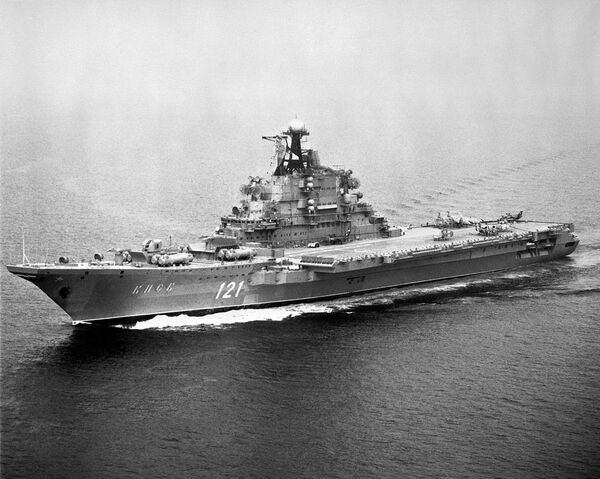
The Kiev-class carrier was armed with 4xtwin P-500 surface-to-surface cruise missiles, 2xtwin M-11 SAMs, 2x9K33 SAMS, 10x21-inch torpedo tubes, 1xtwin FRAS anti-submarine rocket launcher, 2xAK-726 76.2-mm guns, and 8xAK-630 30-mm close-in weapons.
Project 1143 laid the foundations for what would become the most successful design in Soviet and Russian history. The Minsk joined the Kiev in 1978, and the Novorossiysk and Admiral Gorshkov were introduced in 1982 and 1987, respectively. As the last ship in the Project 1143 series, the Admiral Gorshkov was equipped with 2xRBU-6000 anti-submarine rocket launchers, along with the 24x8-cell 9K330 vertical SAM launch system, plus advanced new sensors including the Mars-Passat 3D air search radar.
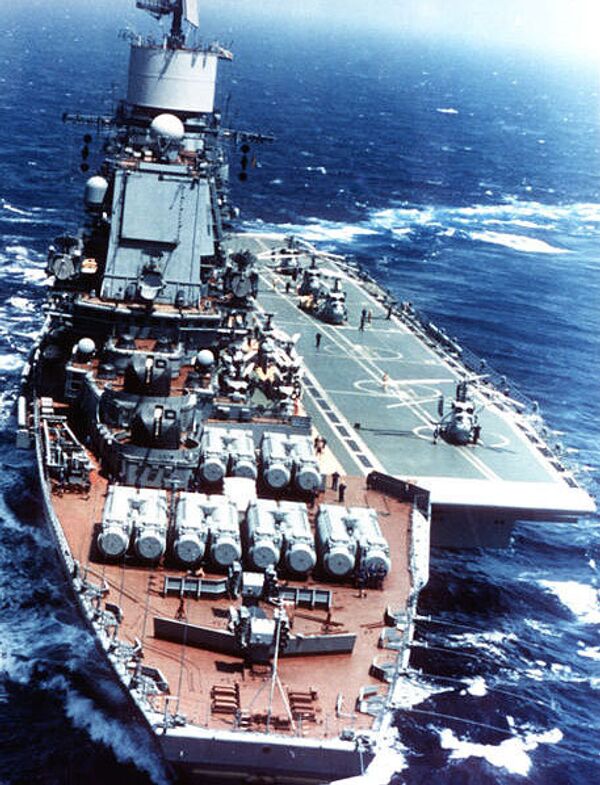
In the late 1970s, the success of Project 1143 led designers to begin work on Project 1143.5, which would eventually become known as the Kuznetsov-class. The revamped design allowed for takeoffs and landings in the traditional fashion, making it possible for specially purposed Su-27s, MiG-29s and Su-25s to operate from the ship. Project 1143.5's flight deck was considerably enlarged to accommodate up to 32 fixed wing aircraft and up to 24 helicopters, and the ship was equipped with a modern catapult.
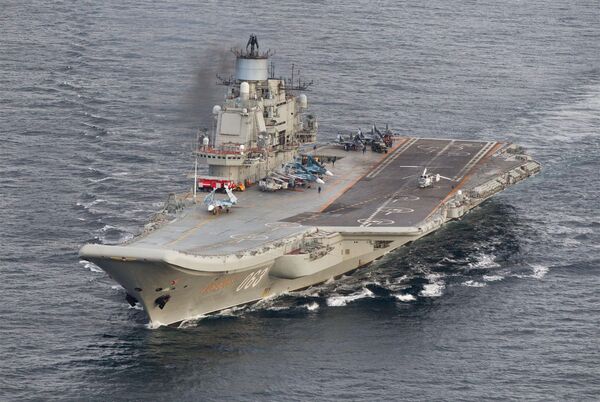
The first ship in the fleet, laid down at the Nikolaev shipyards in 1982, was originally named the Leonid Brezhnev, renamed the Tblisi during trials, and finally settled on Admiral Kuznetsov when it was commissioned in December of 1990. The 60,000 ton, 305m long vessel, capable of speeds up to 29 knots, has a 2,350 crew (including air crew). Undergoing numerous upgrades over its service life, the Kuznetsov is now armed with 12 under-deck Granit anti-ship cruise missile launchers, the Kinzhal anti-aircraft missile system (four modules – 192 missiles), and the Kortik close-in weapon system, featuring 8 modules, 256 rockets and 48,000 rounds of ammunition.
Another ship of the Kuznetsov-class, the Varyag, was laid down in 1985, and began trials in 1988. Shortly before the USSR's collapse, construction was frozen, and Ukraine sold the unfinished ship to China for $20 million in 1998. China completed and modernized the carrier in 2012, renaming it the Liaoning, and has reportedly begun production of a domestically made copy.
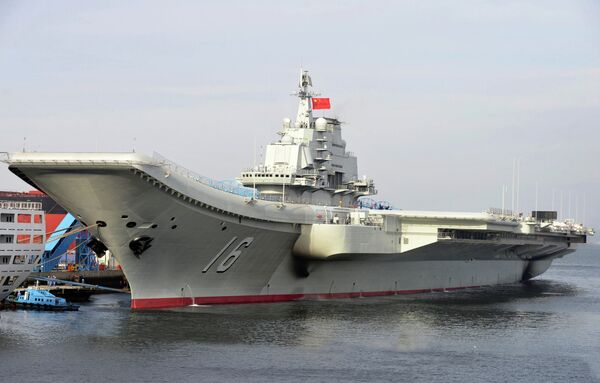
The final ship of the Krechet project, Project 1143.7, the Ulyanovsk, was laid down in 1988, and was to be introduced in 1995. Budget cuts saw the ship scrapped at 20% completion in 1991. The 75,000 ton 321m long vessel would have been the USSR's first nuclear-powered carrier. The design called for the Ulyanovsk to be armed with 12xP-700 Granit surface to surface missiles, and multiple SAM and close-in weapons systems.
The Ulyanovsk-class was designed to carry up to 68 aircraft, including 44 Su-33 and/or MiG-29 fighters, 6 Yak-44 early warning aircraft, and 18 Kamov Ka-27 and Ka-27PS ASW and air-sea rescue helicopters. The carrier was to have a complement of 3,400 personnel.
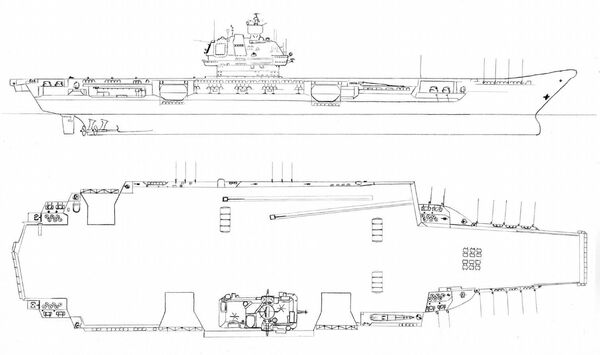
Among the seven ships of Project 1143/1143.5/1143.7, the Admiral Kuznetsov was the only one to survive the collapse of the USSR and to remain in service in the Russian Navy. The Kiev was decommissioned in 1993, and sold to China in 1996, becoming a theme park. In 2011 it was converted into a luxury hotel. The Minsk was decommissioned the same year, and also sold to China, for use as a museum. The Novorossiysk, also decommissioned in 1993, was sold to South Korea in 1995 for scrap metal.
The Admiral Gorshkov held out longer, and was decommissioned in 1996. In 2004 it was sold to India, modernized and renamed the Vikramaditya, becoming part of the Indian Navy.
But the story doesn't end there. With Russia, China and India each undertaking to upgrade and modernize their own variants of the Project 1143 and 1143.5 ships, it can be said that the legacy of Soviet aircraft carrier engineering lives on in the militaries of the emerging world powers. The Admiral Kuznetsov's successful deployment in Syria is an indication of the overall success of its design.
Moreover, Russian engineers have begun working on a new carrier project, dubbed Project 23000E 'Shtorm' ('Storm'). The massive 100,000 metric ton, 330-meter long carrier, designed by the St. Petersburg-based Krylov State Research Center and the Nevskoye Design Bureau, envisions carrying up to 90 aircraft, including the brand new T-50 PAK FA fighter, carrier MiG-29s, AWACS planes, and the trusty Ka-27 helicopters. Designed with two landing strips, the ship would also be equipped with Russia's next-generation air defense system, the S-500, currently under development by the Almaz-Antey Air Defense Concern. More information about the Shtorm can be found here and here.
